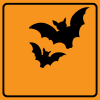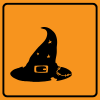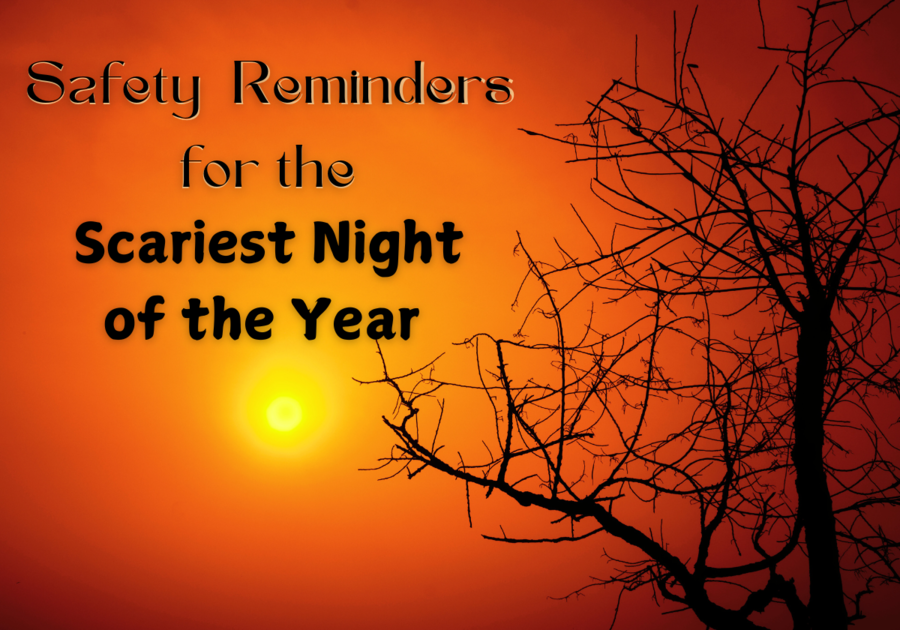Halloween is a lot of fun, and filled with fake scares, of course. But there are also some things about Halloween that can be scary for real. The US Consumer Product Safety Commission has used hospital and insurance data to estimate over 3,000 Halloween-related injuries occur on average every year. Here are some really important safety reminders that can help prevent injuries or accidents from occurring to your family.
|
 |
At Home |
According to the CSPA an annual average of 3,200 Halloween-related injuries required a trip to the Emergency Department; in 2022, 55% of those injuries were related to pumpkin carving alone, and many more involved decorating the home. - Consider using paint, googly eyes, press-in decorations, or glue-on jewels instead of carving, especially if you have younger children.
- Some safety experts have suggest sticking only to using only the small pumpkin carving tools that come in kits. Those are designed specifically for safer pumpkin carving
- If you do choose to carve your pumpkins, avoid the lacerations that hospitals refer to as “Halloween Hand” by carving in a well-lit area on a sturdy surface with sufficient space around you.
- When decorating your home, have a sturdy step stool handy and use that instead of a chair or something that isn’t designed for climbing.
- If you need a ladder to hang decorations on the outside of your home or in trees, be sure to choose one that can support your weight, is tall enough to reach beyond the height you are trying to get to, has slip-resistant feet, and always have a helper holding the bottom of the ladder.
- Keep candy and decorations away from your pets’ reach. Halloween candy smells great to dogs and cats, but it can be deadly, especially if it contains chocolate, raisins, or sugar alternatives, such as xylitol. Wrappers including foil, cellophane, or lollipop sticks can create digestive blockages that you might not notice until it’s too late.
- Glow sticks are generally considered safe, but contain diphenyl oxalate, hydrogen peroxide, and fluorescent dye. If the chemicals are ingested by a child or a pet, they can cause irritation, difficulty swallowing, eye pain, itching, nausea, vomiting, choking, difficulty breathing, coughing or wheezing.
|
|
Around the Community |
A Study funded by the National Institutes of Health examined 42 years’ worth of data from the National Highway Traffic Safety Administration and found that there’s a 43% increased rate of pedestrian fatalities on Halloween versus other nights of the year. According to the AAPC (a professional association for medical coders), of those injured 46% are kids under the age of 18, and 10% are under the age of 6. - Know how to get where you are going and take your time getting there. Far more children than usual will be out walking on roadways, sidewalks, and medians that they aren’t necessarily familiar with. It’s important to be alert for unpredictable behavior.
- Distractions are everywhere on Halloween, both diverting your attention and distracting the attention of others causing them to get in your way. Keep your cell phone in your pocket!
- At twilight, when it’s hardest to see pedestrians, is exactly when the most Trick-or-Treaters are out, and also when the highest percentage of accidents occur. Turn on your car’s headlights even if it’s not dark yet; this will help others to see you.
- Drive slower than you usually do. Driveways, alleys, and small intersections in residential neighborhoods are especially tricky; be sure to allow extra time at stop signs, lights and crosswalks.
- If you are new to California, you should know that Trick-or-Treating starts much earlier than it does in other parts of the US, and you are likely to see costumed children on the streets in the mid-afternoon!
- If going to a party or out with friends, be wary of new people you meet. Halloween unfortunately sometimes attracts unsavory people who feel they can "hide" behind a costume.
- The CPSC reports 86% of adults will bring alcohol to Halloween parties even if children are present at those parties. Don’t drive if you’ve had any alcohol – there are too many dangers on Halloween to take any risks in this area.
|
|
In Costumes |
According to the US Fire Administration, an estimated 9,200 fires were reported to U.S. fire departments in the 3 days surrounding Halloween, causing an estimated average of 25 deaths and 100 injuries per year. Candles and flowing costumes are a terrible combination. St. Louis Children’s Hospital shares that Halloween costumes too frequently lead to falls, choking hazards, or eye injuries. Tripping or falling is the second most common type of Halloween injury, says the CPSC. - Be sure whatever costume your child chooses fits him or her properly and there are no awkward, loose, or dragging parts that can cause trips and falls.
- Props and accessories should always be soft, flexible, and flame-retardant. Eye pokes are also common Halloween injuries.
- Masks can seriously limit the vision of the wearer, so safety experts suggest face paint instead. But…
- Be sure that makeup is non-toxic by testing it on your child’s skin prior to Halloween to avoid having the night ruined by allergens or irritants. The color additives used in theatrical makeup do need FDA approval, but it’s important to read the instructions. If the package says to use a certain colorant is only on hair, or to avoid eye contact, it’s important to know those rules are written for you and your child’s protection.
- Though the look cool, kids and teens should never wear novelty colored contacts lenses, as they can pose serious risks to your eyes. These often low-quality lenses may contain harmful chemicals such as iron or chlorine that can lead to cornea ulcers, keratitis, scarring, impaired vision or even blindness, according to the American Academy of Ophthalmology.
|
|
When Trick-or-Treating |
AAA reports that Halloween is considered the deadliest day for child pedestrians in the US, with NHTSA statistics showing a significant increase in auto accidents involving children. USA Today reports the number of children hit by cars on Halloween to be twice that of any other day of the year. - Children should always go trick-or-treating in groups with an adult. Stick to cross-walks, lighted paths and places where there are plenty of other people.
- Phones are good for emergencies, directions, and taking photos, but should not be used while walking. Stop in a safe place to look at your phone, then put it in your pocket.
- Affix reflective tape to your kid’s costumes or ensure they carry a light stick or wear a glowing bracelet. This will help them be seen by others, including other pedestrians and drivers.
- To be able to see around you, each person in your group should have their own flashlight to carry or be holding the hand of a person with a flashlight.
- Crossing streets can be particularly dangerous in the low evening light amid so many distractions. Always use crosswalks or cross at at stop signs if they are available and avoid crossing from behind parked cars.
- Carry hand sanitizer and use it frequently. Lots of hands will be touching all the same doorbells and candy bowls. Don't let kids touch their mouths or eyes, wipe little hands frequently, and don't let the kids eat anything until they get home.
- The Professional Physical Therapy Association advises bringing water and staying hydrated when trick-or-treating and doing some stretches before starting off on a long walk. If you’re not used to so much walking, it might be more exhausting than you anticipate
|
|
To Tell Teens Who are Supervising Littles |
It's important for teens or non-parental supervising adults to understand the unique safety challenges that are present on Halloween. Don’t let your kids go out Trick-or-Treating with their favorite babysitter or fun uncle without first going over some basic ground rules! - Whoever is in charge needs to supervise the children all the way to the door. Be selective about which houses are visited; every home should be brightly lit as an indicator that Trick-or-Treaters are welcome. Never enter a home unless you know the family well.
- Agree in advance on the specific route the group will follow and what time they are expected home. Insist that they stick together as a group the entire time they are out.
- Children should not eat any treats before they return home. This helps avoid choking incidents or allergic reactions. If you make it a contest to see who comes back with the most, they will be less tempted to snack along the way.
- Remind kids to look both ways before crossing streets and to make eye contact with drivers before stepping off the curb. Insist they always walk on sidewalks or paths, and if there aren’t any sidewalks, to walk on the left side of the street facing traffic.
|
|








